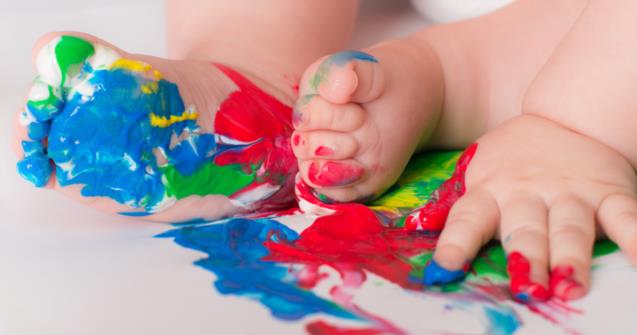
Learning to recognize colors
Color recognition represents an important concept that children must master before starting kindergarten. Colors are included in most early childhood educators' activities to help children learn to name, associate, and identify them. This article will explore every angle of color exploration.
Learning about colors
In general, children will begin learning about colors between the ages of 2 and 3 years old. At first, the focus will be on primary colors (red, green, blue, and yellow). Other colors will gradually be introduced once these basic colors are easy to identify. For certain children, learning to name colors can be quite challenging. The concept of colors remains abstract and this raises the level of difficulty. The following guidelines will help you know what to expect:
- Around 2 years of age, children can name 1-2 colors (often their favorite ones).
- Between 3 and 4 years of age, children can sort objects per their color.
- Between 3 and 4 years of age, children can name primary colors.
- Around 4 years of age, they can name more complex colors.
- Around 5 years of age, they begin to understand how each color can exist in a variety of shades (dark and light colors), but this concept can sometimes be difficult to grasp.
A few tricks that may help
- When children first begin learning about colors, they will "understand" them before they are able to name them. At first, encourage them to point to different colors as you name them. Once the concept is fully integrated, they will be able to name them on their own.
- Regularly name the colors you see within your daily activities. The more children hear the names of different colors, the easier it will be for them to integrate them.
- Focus on a single color at a time. Gradually integrate another color once the previous one is completely mastered.
- Do not insist, color recognition is a gradual process.
A few simple ideas
- A "Twister" game. Set several colourful circles on the floor and invite children to, for example, place one foot on a red circle. This activity will also help children learn to identify their body parts.
- Storage bins. Draw a large colourful circle on a box and invite children to search for toys containing the corresponding color. Have them fill the bin with colourful items.
- Button bowls. Set plastic bowls on a table. Glue a circle of a different color in the bottom of each bowl. Have children sort buttons by adding them to the bowl with the circle of the corresponding color.
- Colourful cutting activity. Hang colourful pieces of construction paper on a wall. Invite children to cut food items, objects, etc. out of magazines and flyers. Have them glue each one on the paper of the corresponding color.
I am sure you have a long list of colourful activities. Do not hesitate to adapt your daily activities to help children master the concept of colors.
Have fun!

 Home
Home Theme activities
Theme activities
 Babies and toddlers
Babies and toddlers
 Arts and crafts
Arts and crafts
 Science
Science
 Creative recipes
Creative recipes
 Tips and tricks
Tips and tricks
 Special needs
Special needs
 Extra activities
Extra activities
 Educ-TV
Educ-TV
 Newsletter
Newsletter  Online store
Online store Educatall club
Educatall club

